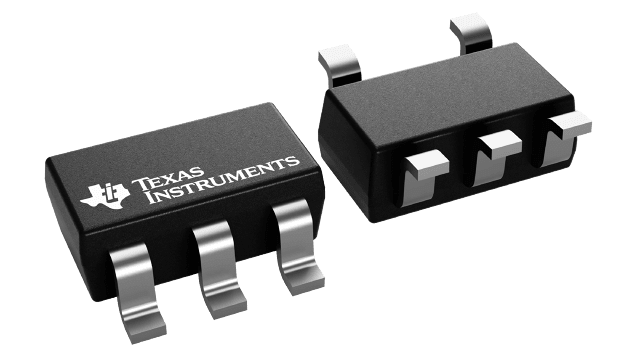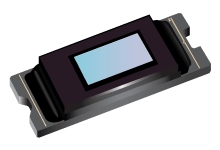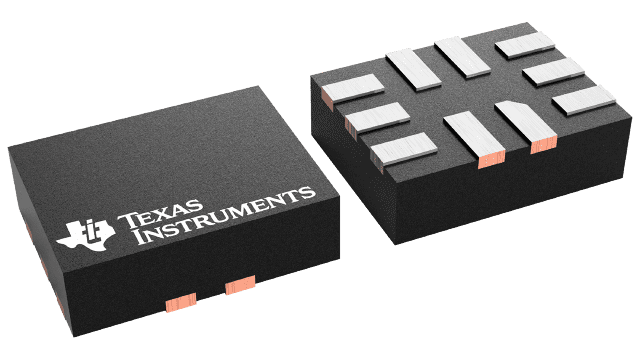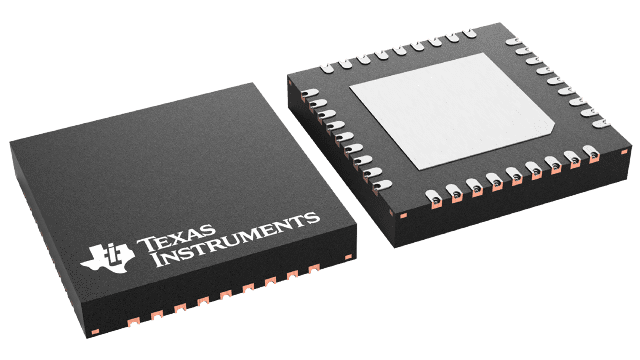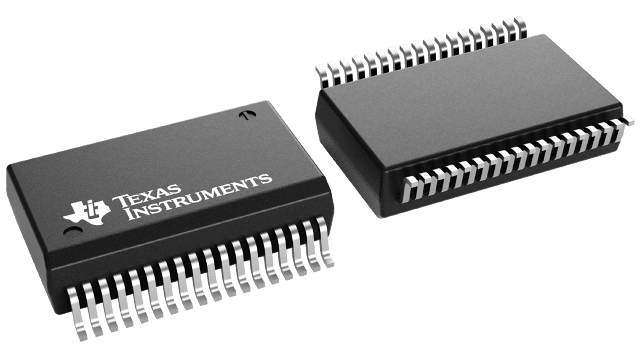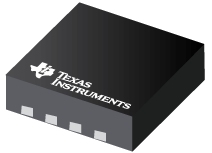Advanced DC/DC converters simplify power system design
With the increased use of electronics across industrial, transportation and medical applications, designers of the supporting power subsystems need to ensure high performance in physically and electrically demanding environments, while also meeting strict regulatory and safety requirements. At the same time, they must stay within ever tightening budget and design schedule constraints. Rolf Horn, Applications Engineer at Digi-Key Electronics, explains.
The DC/DC converter has evolved dramatically over time to meet many of these requirements. They have decreased in size for higher power density, to save space, and offer wide input ranges to simplify inventory and lower the bill of materials (BOM). Other enhancements to make a designer’s task easier include low-noise outputs, tighter load regulation, strong protection and safety features, and remarkable attention to thermal management. However, as designers might expect, not all DC/DC converters are the same, requiring them to be discriminating in their selection to ensure design and application success.
This article will feature DC/DC converters from Bellnix, HVM Technology, Murata Power Solutions, Vicor and XP Power that are compact, ensure low ripple noise, and cater to single and dual-output voltages. It will also highlight and explain features and enhancements, and how they can help designers to boost power adjustment capabilities, lower noise, ensure self-protection, and provide better thermal management.
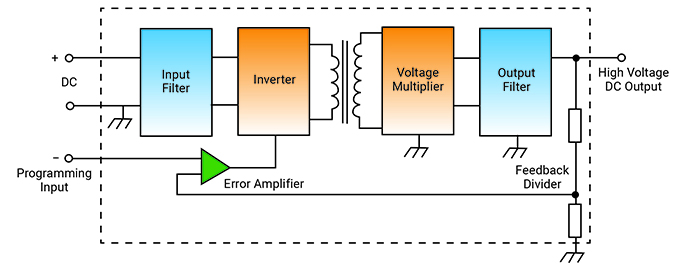
Above: Figure 1. This DC/DC converter is isolated, as indicated by the transformer between the input and output stages (Image source: XP Power)
How DC/DC converters work
As the name implies, a DC/DC converter takes a voltage as input from a DC source and converts it to an output that is at another DC voltage. The output can be either lower (buck converter) or higher (boost converter) than the input voltage. DC/DC converters are either isolated or non-isolated. An isolated DC/DC converter uses a transformer to eliminate the DC path between input and output (Figure 1).
In contrast, non-isolated DC/DC converters, often used when the change in voltage is small, have a DC path between input and output.
Key performance and design considerations
Key performance characteristics of DC/DC converters include efficiency, current rating, ripple voltage, regulation, transient response, voltage rating, size, and weight. Designers also need to be concerned with a converter’s ability to support a wide range of nominal input voltages. This allows one converter to support many applications - reducing inventory and logistics - assuming it’s also able to provide the necessary output voltage and current rating required for the expected loads.
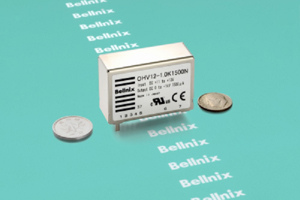
Above: Figure 2. The ultra-compact OHV12-1.0K500P converter from Bellnix measures 44 x 16 x 30mm and outputs 1,000v at 1.5mA (Image source: Bellnix)
Depending on the application and the nature of the power source, protection against overvoltage, undervoltage, reverse polarity, short circuit, and over temperature conditions are also crucial. Likewise, good electromagnetic compatibility (EMC) and electromagnetic interference (EMI) compliance are a must. This is particularly important given that the switching power supplies used in DC/DC converters can introduce noise directly into the load and can emit RF noise that can affect the stability and accuracy of nearby circuits.
Finally, designers should carefully review the thermal characteristics of the converter in the context of the application’s design and operating conditions so that adequate ventilation and other thermal management techniques can be applied as needed.
Smaller is better
Several applications demand DC/DC converters in compact form factors to save space and simplify installation. For such applications, Bellnix engineered the OHV series of 1.5W medium-to-high voltage DC/DC converters specifically to reduce the mounting area required by nearly 60%, compared to modules available at the time of development. A sample device is the OHV12-1.0K1500P, a system-in-package (SiP) that measures 44 x 16 x 30 millimetres (mm) and which outputs 1,000V at 1.5 milliamperes (mA) (Figure 2). Bellnix also designed the series to keep the ripple noise to as low as 5 millivolts (mV) peak-to-peak (P-P).
The series operates off an 11V to 13V input at 0.28A. From this it can output between zero and +/- 1,000V (0 to 1.5mA), 1,500V (0 to 1.0mA), and 2,000V (0 to 0.7mA), depending on the model.
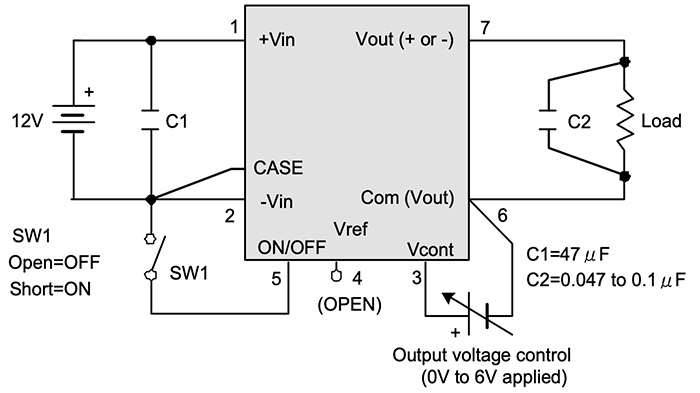
Above: Figure 3. To reduce input impedance due to lead length between the supply and the converter, designers can add capacitor C1 on the terminal side. To further reduce noise, C2 can be added across the load (Image source: Bellnix)
The devices’ low ripple noise of 5mVP-P is important for applications such as instrumentation, where any instability in the high-voltage power supply can induce noise and affect the accuracy of the equipment. Bellnix has developed its own circuit technology to keep noise to a minimum, and while the devices are self-contained - with no external components required - designers can add components to further reduce noise and also reduce input impedance (Figure 3).
For example, to reduce the input impedance caused by extended distance between the converter and the power supply, capacitor C1 can be added at the input. This capacitor should be placed on the terminal side of the converter to reduce lead inductance. To reduce noise, a capacitor (C2) can be placed carefully near the load such that it has minimum input-output wiring, with special attention to creepage and spatial distances.
All devices in the line have built-in short-circuit and overcurrent protection, and they further boost the reliability of the power supply with a five-sided metal case that uses additional shielding to safeguard the device against excessive heat and temperature. The output voltage on the OHV series can be controlled from 0V to 2,000V by an external voltage or an external variable resistor.
For designers of battery-powered devices, HVM Technology’s nHV series offers precision regulated power of 100 milliwatts (mW) at up to 1 kilovolts (kV) in a package measuring 11.4x8.9mm, with a height of 9.4mm. Specifically, the load regulation is < 0.2% (typical) from no load to full load.
The nHV series takes a 5V input (4.5V ± 0.5V). Depending on the model, the output voltage ranges between -1,200V (NHV0512N) and 1,200V (NHV0512) at 83 microamperes (µA), to -100V (NHV0501N) and 100V (NHV0501) at 1mA.
The series employs a high impedance programming input (100 kilohms (kΩ)) to make the devices easy to install and eliminate the need for a low-impedance adjustable power source voltage. The output voltage is independent of the input voltage and is instead proportional to the programming voltage to ensure robust linearity.
Wide input range
Like the nHV series, XP Power’s DTJ15 and DTJ20 series of 15W and 20W DC/DC converters are also miniaturised for easy installation and power efficient operation, but with a twist: they can be installed to a chassis or DIN-rail and connected via screw terminals (Figure 4 - top).
Besides easy installation, what’s important about these power converters is their ability to cover a wide DC voltage input range, spanning from 9V to 36V, and 18V to 75V. A variety of input sources, including multiple nominal battery voltages and vehicle supplies, allow these converters to serve a broad range of industrial, commercial, and communication applications.
Together, the DTJ15 and DTJ20 series DC/DC controllers offer a total of 14 variants with single-output devices providing voltages of 3.3V, 5.0V, 12.0V and 15.0V, and dual-output devices providing ±5.0V, ±12.0V, and ±15.0V, respectively (Figure 5).
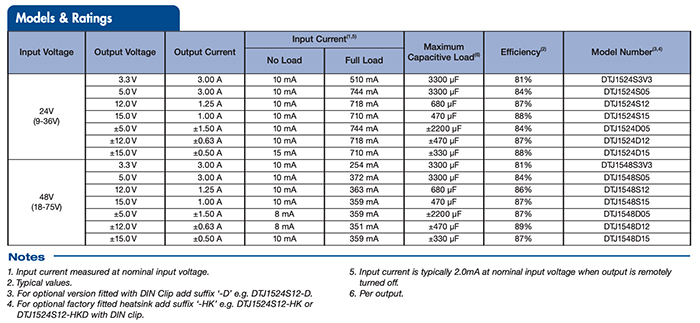
Above: Figure 5. The DTJ15 and DTJ20 series DC/DC converters are notable for their wide input voltage range, as well as their output range, the latter giving a total of 14 variants. Image shows output for DTJ15, 15w converter (Image source: XP Power)
A remote ON/OFF function allows the DC/DC converters to be controlled by software, which helps control overall power consumption, allowing remote installations to operate efficiently.
Another important feature of the DTJ15 and DTJ20 series DC/DC converters is the soft start that ramps the output voltage by modulating the internal error amplifier reference. This causes the output voltage to approximate a piecewise linear ramp, which finishes when the voltage reaches the nominal output voltage. Other protection features offered by the DTJ15 and DTJ20 series controllers include short-circuit protection and input reverse polarity protection.
Protection features
Power system designs for railway, industrial, and transportation applications demand fast settling times to transient step loads. Other transient events such as oscillations in the input and output voltage make the self-protection features critical for the safe and reliable operation of DC/DC converters.
In current limiting, also referred to as power limiting, as soon as the output current increases to approximately 130% of its rated value, the DC/DC converter will go into a current limiting mode. As a result, the output voltage will start decreasing proportionately to maintain somewhat constant power dissipation.
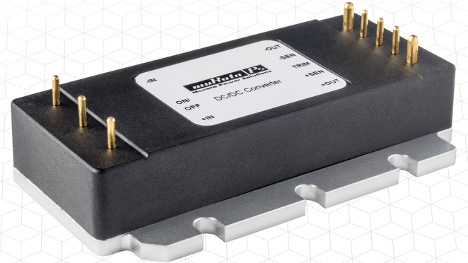
Above: Figure 6. The IRE-Q12 series converters go through extensive testing to ensure that they can withstand the harsh environmental conditions typically found in railway and industrial applications (Image source: Murata)
If environmental conditions cause the temperature of the DC/DC converter to rise above its designed operating temperature, a precision temperature sensor will power down the unit. Once the internal temperature decreases below the threshold of the temperature sensor, the DC/DC converter will self-start.
Murata’s IRE-Q12 Series of isolated DC/DC converters feature self-protection features to ensure that there are no adverse effects from higher capacitive loads (Figure 6). For example, the IRE-12/10-Q12PF-C incorporates all relevant self-protection features while meeting the EN50155 requirements for facilitating nominal battery voltages during brownout and transient conditions.
The IRE-Q12 Series converters provide a single 120W isolated output from an input voltage range of 9V to 36V in a standard eighth-brick package and footprint. It also provides two baseplate options, one for minimal board space consumption, the other a slotted flange for mechanical fixing to a heatsink.
The output of these DC/DC converters can be trimmed +/-10% to ensure fast settling times to transient step loads. Furthermore, all of the converters are tested and specified for input reflected ripple current, input terminal ripple current, and output noise.
Standalone and array power
Vicor’s DCM2322 is an isolated DC/DC converter series that operates from unregulated DC inputs ranging from 9V to 50V to generate an isolated 28V output (Figure 7). It’s based on the company’s double-clamped zero-voltage switching (DC-ZVS) topology that helps it deliver a high efficiency of 93% across the full input voltage range.
The DC/DC converter module (DCM) units, such as the DCM2322T50T3160T60, leverage the thermal and density benefits of Vicor’s ChiP packaging technology that distributes the internally generated heat evenly across the surface of the package. The ChiP technology also enables the DCM converters to offer flexible thermal management options with very low top and bottom side thermal impedances.
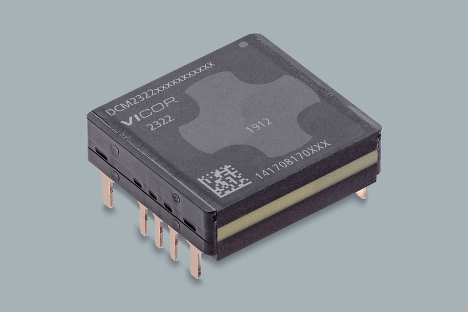
Above: Figure 7. The DC-ZVS topology enables DCM2322 converters to achieve up to 93% efficiency (Image source: Vicor)
The efficient thermal distribution allows the DCM units to feature connectivity from a variety of unregulated power sources to the point-of-load. They provide both input and output overvoltage fault protection and other fault handling mechanisms that shut down the converters when a fault is detected (Figure 8).
These features allow the DCM converters to provide a regulated output voltage around defined nominal load line and temperature coefficients. If the internal temperature of the converter exceeds its limit, a temperature fault is registered, and the powertrain immediately stops switching. The converter waits for the internal temperature to return to the given threshold and then restarts.
Moreover, these DC/DC converters provide integrated EMI filtering, tight output voltage regulation, and a secondary referenced control interface while retaining the fundamental design benefits of the conventional brick architecture.
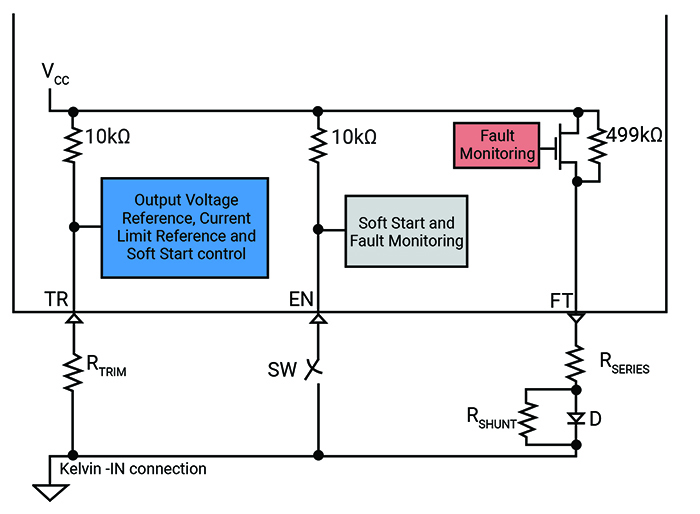
Above: Figure 8. The DCM converters facilitate fault monitoring handling capabilities, as well as safety features that include current limiting and soft-start control (Image source: Vicor)
In applications that call for more power than a single DC/DC converter can deliver, such as data centres and telecommunication gear, multiple devices can be used in parallel. Multiple DCM converters can be paralleled in array mode for higher power capacity via load sharing, even when they are operating off different input voltage supplies. Vicor has qualified arrays of up to eight DC/DC converters for 480W capacity.
Conclusion
For designers of power supplies to support electronic systems for industrial, medical, transportation, and instrumentation applications, the complexities and associated costs are many, from the need for wide input voltage ranges to thermal management and load sharing. However, as shown, DC/DC converters have evolved into ever-smaller, easy-to-install, self-contained power supplies that eliminate many of those complexities.
For designers looking for better performance, additional components can be added. Also, where more flexibility is required, remote and programmable features are increasingly available to carry out impedance compensation and facilitate a variety of protection features to avoid burnouts, respond to transient conditions, and reduce overall system power consumption.



